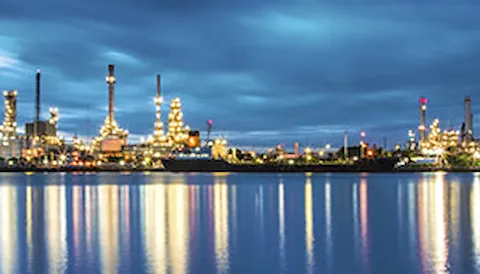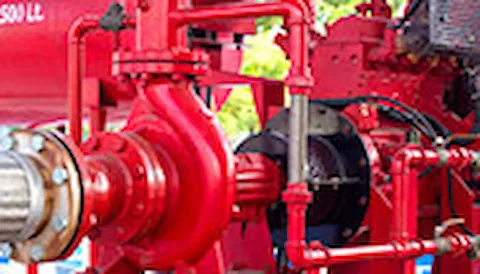Hazardous Locations Certification for USA and Canada
North American Approval is mandatory for products intended to be sold in the USA and/or Canada. The rule stems from the National Electrical Code (NEC), which outlines the US requirements and the Canadian Electrical Code (CEC), which outlines the Canadian requirements.
Hazardous Locations Certification for USA and Canada
Following Certification, quarterly factory inspections are required to be carried out at the manufacturing site to ensure the approved product being manufactured continues to comply with the requirements of the applicable standards.
For North America, products used in explosive atmospheres are required to comply with both, the applicable Hazardous Locations standards, as well as the applicable Ordinary Locations standards for electrical safety.
Hazardous Location standards can be further split down into two: standards for the Division System and the Zone System.
The Class/Division/Group system is based on Article 500 of the National Electrical Code (NEC) and rules J18-000 to J18-072 of the Canadian Electrical code (CEC) where
- Classes - defines the general nature of the hazardous material in the surrounding atmosphere
- Divisions - defines the probability of hazardous material being present the surrounding atmosphere
- Groups - defines the type of the hazardous material in the surrounding atmosphere
The Zone system is based on Article 505/506 of the National Electrical Code (NEC) and Rules 18-000 to 10-074 of the Canadian Electrical Code (CEC), which follows the international method of area classification as developed by the International Electrotechnical Commission (IEC).
- Zones - defines the general nature (or properties) of the hazardous material - if its gas or dust, and the probability of the hazardous material in the surrounding atmosphere
- Groups - defines the type of the hazardous material and (partly) the location of the surrounding atmosphere
Relevant Directives / Schemes
NFPA 70: National Electrical Code (NEC)
Canadian Electrical Code (CEC)
Basic Technical Concepts
Hazardous Areas defined in terms of Class and Divisions depending on the protentional ignition source and expected frequency and duration of an explosive atmosphere being present.
| Class I | Locations in which flammable vapours and gases may be present |
| Class II | Locations in which combustible dust may be found |
| Class III | Locations in which are hazardous because of the presence of easily ignitable fibres or flying’s. |
Division 1: In which ignitable concentrations of hazards exists under normal operation conditions and/or where hazard is caused by frequent maintenance or repair work or frequent equipment failure.
Division 2: In which ignitable concentrations of hazards are handled, processed or used, but which are normally in closed containers or closed systems from which they can only escape through accidental rupture or breakdown of such containers or systems.
In addition to Divisions, Hazardous Areas are further subdivided by Gas or Dust Groups depending on the explosion properties of the gas or dust and Temperature Classes depending on the auto-ignition temperature of the explosive atmosphere.
| Gas or Dust Group | Representative Gas or Dust |
| A | Acetylene |
| B | Hydrogen |
| C | Ethylene |
| D | Propane |
| E | Metal dust |
| F | Coal dust |
| G | Grain dust |
| Surface Temperature °C | Equipment Temperature Class |
| < 450°C | T1 |
| < 300°C | T2 |
| < 280°C | T2A |
| < 260°C | T2B |
| < 230°C | T2C |
| < 215°C | T2D |
| < 200°C | T3 |
| < 180°C | T3A |
| < 165°C | T3B |
| < 160°C | T3C |
| < 135°C | T4 |
| < 120°C | T4A |
| < 100°C | T5 |
| < 85°C | T6 |
Hazardous Areas are defined in terms of Zones and Safe Areas depending on the expected frequency and duration of an explosive atmosphere being present.
| Zone 0 | An area in which an explosive gas atmosphere is present continuously or for long periods or frequently. |
| Zone 1 | An area in which an explosive gas atmosphere is likely to occur periodically or occasionally in normal operation. |
| Zone 2 | An area in which an explosive gas atmosphere is not likely to occur in normal operation, but if it does occur, it will exist for a short period only. |
| Zone 20 | An area in which an explosive dust atmosphere, in the form of a cloud of dust in air, is present continuously, or for long periods or frequently. |
| Zone 21 | An area in which an explosive dust atmosphere, in the form of a cloud of dust in air, is likely to occur in normal operation occasionally. |
| Zone 22 | An area in which an explosive dust atmosphere, in the form of a cloud of dust in air, is not likely to occur in normal operation but, if it does occur, will persist for a short period only. |
| Safe or Non-Hazardous Area | An area in which an explosive gas, or dust atmosphere is not expected to be present in quantities such as to require special precautions for the construction, installation and use of equipment. |
In addition to Zones, Hazardous Areas are further subdivided by Gas or Dust Groups depending on the explosion properties of the gas or dust and Temperature Classes depending on the auto-ignition temperature of the explosive atmosphere.
| Gas or Dust Group | Representative Gas or Dust |
| I (mines susceptible to firedamp) | Methane |
| IIA | Propane |
| IIB | Ethylene |
| IIC | Acetylene & Hydrogen |
| IIIA | Ignitable fibres/flyings, such as cotton lint, flax & rayon |
| IIIB | Non-conductive dusts, such as flour, grain, wood & plastic |
| IIIC | Conductive dusts, such as magnesium |
Surface Temperature °C | Equipment Temperature Class |
| < 450°C | T1 |
| < 300°C | T2 |
| < 200°C | T3 |
| < 135°C | T4 |
| < 100°C | T5 |
| < 85°C | T6 |
Standards
The standards required for North American Approval is dependent on what type of marking you require (i.e. Divisions or Zones for Canada and/or the US). But it is important to remember that Ordinary Location standards (covering electrical safety) will always need to be applied:
- For Canada Divisions Approval, the CAN/CSA C22.2 Series Standards and for US Division Approval ANSI/UL or ANSI/ISA or FM Standards are generally used.
- For Canada Zone Approval, the CAN/CSA C22.2 60079 Series Standards and for and US Zone Approval ANSI/UL or ANSI/ISA 60079 Series Standards are general used.
- This can be further simplified if you already have an existing IECEx Certification with valid ExTR’s. If this is the case, then only the National Deviations between the standards need to be applied.
- In the majority of cases the relevant Ordinary Location standards are CAN/CSA 61010 for Canada Approvals and ANSI/UL or ANSI/ISA 61010 for US Approval.
Field Certification
The quarterly factory inspections mentioned above apply only to Full Certification where the product is mass produced, a sample of the product is tested at a laboratory recognized by the certification body, and compliance requirements cover both the product and the factory.
However, it is worth noting that an alternative certification program known as Field Certification is also accepted in Canada and the USA. This service is similar to what is known under the IECEx/ATEX regimes as Unit Verification and is used in situations where the product is custom made, or sold in limited quantity, or already delivered to the installation site without approval. In this case, the unit(s) is evaluated in the field (i.e. on a site determined by the client), and if found in compliance it is labelled on the spot, thus eliminating the need for a quality system and factory inspections.
What Services Do We Offer?
We offer a full scope of evaluation, testing and certification services for both Division and Zone North American Approval, through our partnership with QPS, an accredited Certification Body and a Nationally Recognised Test Laboratory by SCC and OSHA respectively.
In addition, DNV can supply pre-evaluation services to assist our customers with gap assessment or understanding of the technical and compliance requirements prior to undertaking an approval project.




